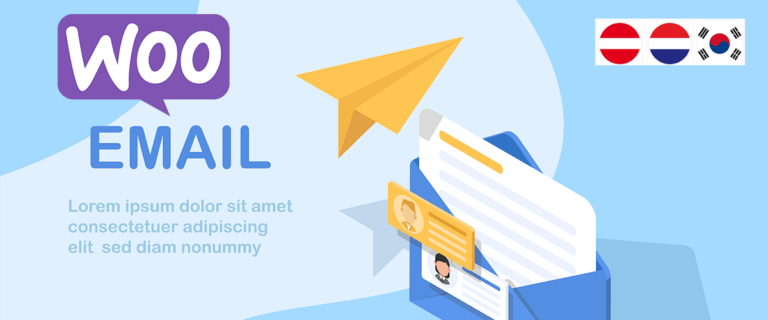Translation memory (TM) is a system that stores previously translated text fragments so that they can be reused in future projects. This method speeds up translation work while maintaining language consistency. Meanwhile, terminology management functions like an “internal glossary” that standardizes important company or product terms to ensure consistency across all content and languages.
Both elements are crucial for large corporate websites with extensive content that operate in multiple languages. Without TM and terminology management, the risk of inconsistent translations, high costs, and slow processes increases. By combining both in the workflow, companies can maintain quality, efficiency, and brand identity across global markets.
Benefits of translation memory for enterprise scalability

Translation memory (TM) provides a foundation for scaling global content efficiently. By storing and reusing previously translated segments, enterprises can maintain consistency while expanding their multilingual presence. Key benefits include.
- Faster translation work: TM suggests previously translated phrases, so teams don’t have to translate the same thing over and over again.
- Cost savings: Using existing translations reduces costs per project, especially when updating product content or documents.
- Term consistency: TM ensures the same terms are used across all languages and projects, maintaining brand identity consistency.
- Easier collaboration: Multiple translators can work on the same project without overlap or inconsistencies with a shared TM.
- Translation scalability: As a company grows, TM helps manage large-scale translations efficiently, making it easier to expand into new markets without starting from scratch.
Strategic terminology management in an enterprise website

Terminology management helps enterprise websites maintain consistent language and brand identity across all markets. By standardizing key terms, like product names, taglines, and technical phrases, ensures every translation carries the same meaning and tone. This consistency allows global teams to communicate clearly and keep the brand message unified in every language.
Building a scalable termbase
Building an official company glossary or termbase is the foundation of effective terminology management. This glossary stores important terms, definitions, and usage guidelines in all target languages. For example, an application feature called “Smart Dashboard” must be consistent across all languages so that users recognize the same feature.
To maintain scalability, start with the most frequently used terms, then add new terms as content and languages grow. Providing easy access to translators and content creators through integrated tools is also important so that all teams can use the same references without errors.
Maintaining brand voice

Maintaining brand voice means ensuring that promotional language and corporate tone remain consistent across all countries. For example, the slogan “Simplify Your Life” should be translated in a friendly and memorable style, not just word-for-word. Tone and style guidelines help each translation stay true to the brand’s character, while remaining culturally relevant in each market.
A consistent brand voice also builds trust and a professional image for a global audience. With clear guidelines, translation teams can adapt local terminology or language styles without losing the essence of the brand, ensuring that the company’s message remains strong in all languages.
Collaborating with experts
Terminology management effectiveness improves when linguists, product specialists, and brand experts work together. The product team ensures technical terms are accurate, the marketing team maintains the promotional tone, and translators ensure the language sounds natural in the target language.
Regular review processes, such as periodic audits or consultations with experts, help keep the terminology list up-to-date and prevent misinterpretations. This collaboration ensures that all multilingual content is accurate, consistent, and aligned with the brand identity across all markets.
Integrating translation memory and terminology management

Integrating translation memory (TM) and terminology management creates a single, streamlined system for translating content. When both tools work together, teams can save time, maintain consistent terminology, and ensure accurate translations that reflect the brand across all projects. Combining them makes translation faster, more reliable, and easier to manage.
Integration within advanced TMS

Modern Translation Management Systems (TMS) allow companies to connect TM and terminology databases in one platform. Translators can access approved terms and previous translations directly while working, which reduces mistakes and speeds up the process. This setup also automatically ensures that every project follows the same language and brand rules.
For example, tools like Linguise support TM and terminology management, making it easy to manage multilingual websites. With real-time translation suggestions and integrated term lists, Linguise helps teams keep translations consistent while saving time on repetitive work.
Real-time quality assurance
Integrating TM and terminology also allows for real-time quality checks. The system can automatically spot inconsistencies, missing terms, or incorrect translations as the translator works, preventing problems before review.
This approach reduces manual proofreading and speeds up delivery. Companies can even set custom rules, such as enforcing approved terms or flagging unapproved words, so every translation meets the brand’s standards without delays.
Scalable connected workflows
When TM and terminology management are fully integrated, companies get scalable workflows that grow with their global operations. Teams across regions can work on the same platform, using shared resources and consistent guidelines to keep all translations aligned.
To build this system, companies should automate data syncing between projects, regularly update TM and termbases, and provide collaboration tools for all teams. This creates a continuous workflow where every new translation benefits from previous work, improving speed, consistency, and long-term efficiency.
Best practices for sustainable translation workflow

A sustainable translation workflow ensures efficiency, consistency, and adaptability as a company grows. Following a few simple practices helps maintain quality while reducing repetitive work and improving team collaboration.
Updating TM and termbase
Keep your translation memory (TM) and term lists up-to-date. Whenever new products, campaigns, or content appear, update terms to avoid confusion. For example, if a company renames a feature, reflect that change immediately in the TM so all translations stay consistent.
A good habit is to review these lists every few months, removing duplicates, verifying terms, and adding new approved entries. This keeps translators working with accurate data and reduces mistakes.
Automating routine processes

Automation helps eliminate repetitive and time-consuming tasks. Tasks like preparing files, assigning translations, or checking for errors can be automated within a Translation Management System (TMS), freeing teams to focus on complex or creative work.
For instance, companies can set up automatic pre-translation using TM suggestions or auto-apply approved terms. This ensures consistent use of terminology across large-scale projects, such as frequent website updates or product documentation releases, while saving significant time.
Training global teams
Even with advanced tools, a well-trained team is essential for sustainable workflows. Translators, project managers, and reviewers need to understand how to use TM and terminology systems to maintain quality and consistency across all content.
Practical training examples include onboarding sessions for new translators to learn company-specific termbases and style guides. Regular workshops or online refreshers help teams stay updated on new features or workflow changes, strengthening collaboration and reducing mistakes.
Using analytics to continuous improvement

Analytics provide insights into translation performance and identify areas for improvement. Metrics such as translation speed, TM reuse, and QA error rates show how well teams are using TM and terminology systems and where adjustments may be needed.
For example, if TM reuse is low, it may indicate that translators aren’t leveraging existing content, signaling a need for additional training or workflow updates. Continuous monitoring and data-driven adjustments make the translation process smarter, more efficient, and more scalable.
Conclusion
Translation memory and terminology management are essential for enterprise websites that want consistent, high-quality multilingual content. These tools allow companies to save time, reduce costs, and maintain a unified brand voice across all languages, making global expansion smoother and more efficient.
For teams looking to simplify and optimize their translation workflow, Linguise offers a practical solution. With integrated translation memory, terminology management, and real-time suggestions, Linguise helps maintain consistency, speed up translation, and make managing multilingual websites easier. Start trying Linguise and see how it can streamline your global content efforts.




